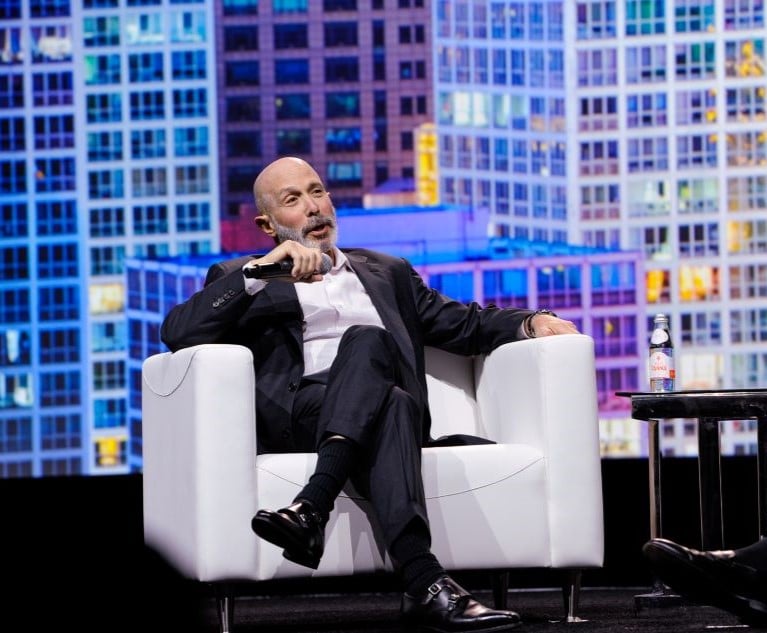A leveling-out of systemic issues that once racked upProfessional Liability claims has ushered in a new area ofstability in the market. But that stability doesn't mean thingsaren't exciting in this space, as carriers continue to evolve withthe ever-increasing need to weave Cyber coverage intopolicies.
|Additionally, the stabilization of losses has created acompetitive atmosphere for capacity and pricing, with new playersentering the arena and existing carriers expanding to writecoverage for professional segments they previously didn't cover.The future of Professional Liability is dynamic, executives say,and carriers are enthusiastically trying to keep up.
|Stabilizing Marketplace
|Issues that were claims drivers in the Professional Liabilityinsurance market in recent years have more or less abated,according to Gary Mann, Errors & Omissions (E&O) practicegroup leader for financial lines at Allianz GlobalCorporate & Specialty (AGCS). He notes that theU.S. has mostly recovered after the housing and stock market bubblebursts, the financial crisis and the Great Recession (“depending onwho you talk to,” he notes), and explains that the change in thoseexposures has helped put the market on a more even keel.
|“The interesting thing is that compared to more recent years,the marketplace right now is stable,” says Mann. “What we're seeingright now is — I'll dare say — a normalized state for themarketplace, meaning there's no overall systemic issue that'saffecting one particular segment or more.”
|According to David Egosi, senior vice president and head ofprofessional risks at Hiscox USA, those recoveries have aided profitabilityin segments that typically produced small margins. “A period ofeconomic recovery has also padded performance within historicallymarginal Professional Liability segments such as architects &engineers, real estate, lawyers and accountants E&O,” hesays.
|Matt Probolus, E&O portfolio manager at Travelers, addsthat while the types of claims in the Professional Liability spaceare “still the same,” frequency is indeed on the decline. “Ithasn't returned to pre-recessionary levels, but claims are at lowerlevels than we have seen in recent years,” he adds. “There aresegments best described as experiencing stable pricing, with somedownward pressure depending on the industry. I think that's areflection of the overall market competition, and some feeling goodabout their results right now.”
|Evolving with Cyber
|Yet all is not calm in this space. The infiltration of cyber exposures into nearlyevery segment of Professional Liability is a growing concernamong insurers. “The one area in which we are seeing new losseshitting professional firms is claims involving nontraditional losssources, such as cyber phishing incidents,” says Probolus.“Those are costing significant sums of money.”
|Maintaining the privacy rights of clients, data collection, andsecurity are growing issues that all professional service providersare facing, adds Mike Muglia, senior underwriter at Burns &Wilcox. “Some of the biggest claim drivers are coming fromnegligent cyber security and data protection practices,” he says.“We have seen fraudulent wire transfers, data breaches andsecurity-related claims pushed to Professional Liability policiesunder the banner of negligent professional services, and that wasnever the intent of the policy.”
|
“More and more of professionals' jobs involve technology, and asa result more and more products are being merged with cybercoverages as either supplemental, or as blended into the coverage,”Mann explains. “The evolving trend, if you will, is the furtherintegration of technology into professional services that wouldthen lead to the marketplace itself evolving the products toinclude Cyber coverages.”
|Adds Egosi, “Emerging and evolving exposures such as cyber andtechnology could drive market-wide losses as these coverages takeshape at breakneck speed and carriers leverage these untestedexpansions to maintain and grow their core E&O portfolios.”
|Matthew C. Kramer, senior vice president, ProfessionalLiability, Arch Insurance Group, says there is no question thatthe biggest exposures in the market are cyber-related: “The cyberexposures continue to change at a rapid pace. This is a globalissue and won't be going away, as evidenced by recent malwareattacks such as WannaCry.”
|“The economic impact last year of cyber-relatedthreats are estimated to be north of $400 billion,” he adds.“As threats become more sophisticated and prevalent, the economiclosses will escalate, as will the losses for insurance carriers.The biggest claim-drivers at this point are the cyber-relatedfirst-party losses that companies may experience when they arevictims of a cyber event.”
|Cyber exposures go beyond targeted attacks, however. Accordingto Kramer, simple employee errors can cause losses, and the risksin those types of situations can be just as serious.
|Competitive Pricing
|Despite the growing concern over cyber-related losses, theoverall lower claims and stable pricing are helping shape theProfessional Liability marketplace into a competitive one forcarriers. For traditional E&O accounts, there are segmentswithin the diverse professional segments themselves that helpgenerate competition and variations in pricing and carrierappetite, says Kramer.
|“For example, competition for a real estate account can be quitedifferent than the market for insurance agents where there isplenty of capacity and broadening of terms and conditions,” henotes. Furthermore, a similarly situated account may see differentlevels of pricing and competition depending on the state ofdomicile.
|“We're seeing pricing changes as more account-specific now,”says Mann. “Gone are the days — thank goodness — when we would seean account get a 20% discount at renewal even though it hasclaims.”
|Muglia says Professional Lines is “extremely competitive” from acapacity standpoint as well. “There is no shortage of options fornearly any miscellaneous or technology professional,” he explains.Renewal rates are typically holding flat as these segments ofbusiness have performed very well for carriers and remainprofitable.
|“There is more capital than ever, with more carriers joining thefray every year,” adds David Lewison, senior vice president,Professional Lines national practice leader with AmWINS Group Inc.
|“We're seeing competitors increasing their appetite as well,”says Mann. “They're expanding the lines they're writing, likearchitects & engineers, agents E&O — where they normallywouldn't have in the past.”
|Technology Shapes a Dynamic Market
|
Cyber exposures, the use of data analytics and the adoption of InsurTech are poised to keepinsurers on their toes as they look into the future of theProfessional Liability market.
|“Next year and in coming years, we think the Cyber market willcontinue to grow exponentially in terms of breadth of coverage aswell as availability of the product,” says Kramer. “It is estimatedthat the current global Cyber marketplace is roughly $3 billion inpremiums written, with growth expectations of greater than $7billion in the next three to five years. That presents asignificant opportunity for the marketplace to provide solutionsfor our clients.”
|Similarly, Lewison notes how a potential — some may even sayprobable — cyber business interruption claim from a cloud providerwould be … interesting.
|“There are over 70 cyber markets and the same insurers are inD&O and E&O,” he says. “That could suck out capacity andmake things challenging.”
|On the horizon, Egosi sees the use of InsurTech having thepotential to play a large role in the Professional Liability space.“Buying behaviors and traditional insurance models will continue tobe tested as InsurTech solutions become more commonplace,” he says.“Next year we can see material movement within the small commercialsector as the market evolves from commercially led solutions tocost of product- and technology-led solutions.”
|With the continued influence of evolving technology, Mugliastresses the importance of maintaining accuracy in the underwritingprocess. “While emerging technologies will help the process,brokers need to understand that the quickest solution is not alwaysthe right one,” he says. “This is why the value of relationshipswill grow even stronger as the industry endures technologicaladvances, and specialty partners will continue to play a key rolefor brokers and agents.”
|From the carrier side, Probolus emphasizes getting the most outof the technology available today and to come: “The use ofanalytics has become a huge differentiator between carriers and acompetitive advantage not only with the carriers, but also inpartnering with brokers,” he explains. “The ability to read andanalyze data has potential for the early adopter industry leadersto become more targeted, efficient and stable in terms of pricingand predictable profitability.”
|With so much potential change and increased opportunities — aswell as challenges — coming Professional Liability's way, Kramersays the ideal word to describe the current state of the market is“dynamic.”
|“There's no other way to describe what's currently happening,”adds Kramer. “It's an exciting time to be a part of theProfessional Lines marketplace.”
|
Want to continue reading?
Become a Free PropertyCasualty360 Digital Reader
Your access to unlimited PropertyCasualty360 content isn’t changing.
Once you are an ALM digital member, you’ll receive:
- All PropertyCasualty360.com news coverage, best practices, and in-depth analysis.
- Educational webcasts, resources from industry leaders, and informative newsletters.
- Other award-winning websites including BenefitsPRO.com and ThinkAdvisor.com.
Already have an account? Sign In
© 2024 ALM Global, LLC, All Rights Reserved. Request academic re-use from www.copyright.com. All other uses, submit a request to [email protected]. For more information visit Asset & Logo Licensing.








